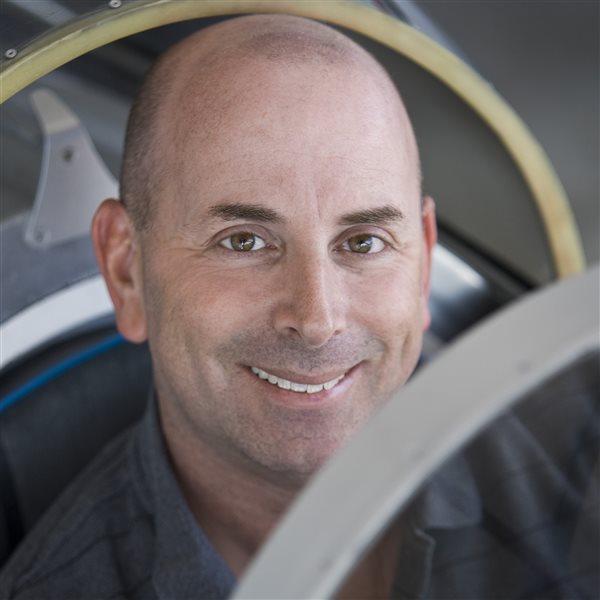Hanging out with the Ultra
Seeing how far we’ve come

It strangely reminds me of meeting my future parents-in-law. I loved everything about their daughter, so it came as quite a shock that a creature as lovely as she came from such prickly, disagreeable, and judgmental parents. Sure, they were smart and capable and had accomplished tremendous things during their lives and careers. But they were complicated. And things had to be done their way, or no way at all.
This Cessna Citation 560 Ultra was built in 1990—about the same era I met my in-laws-to-be. And the introductions were similarly excruciating.
On the day I met the Ultra, I had arrived at the airport before dawn, well in advance of the start of the trip, so that I could preflight the airplane and familiarize myself with it. I gave myself two hours—but two days probably wouldn’t have been enough time.
First, the preflight itself took longer since it required removing and checking actual dipsticks instead of simply glancing at oil sight gauges. And reconnecting the main battery involved crawling into the rear baggage compartment instead of simply opening an access door. Cessna has made many pilot-friendly changes to their Citations in the 32 years since this airplane rolled out of the Wichita, Kansas, factory, and I was beginning to appreciate their thoughtful improvements.
Once inside the cockpit, I was impressed that it was roomier than the M2 I was accustomed to. The windows were huge, and there was much more physical space. But as soon as I attempted to load the flight plan into the Honeywell Primus flight management system, I was flummoxed.
Turn the ignitions on manually? Activate the anti-skid braking system? Set the cabin pressurization? All those important steps are automated on new airplanes.I got the origin and destination airports right, but not the departure, arrival, or any of the airways or their associated waypoints in between. It was an exercise in futility, and I admitted defeat and shut down the avionics to avoid draining the battery. We’d need it soon enough to start the engines.
Tony Buckner, the retired airline pilot who would serve as pilot in command on this flight, kindly took over the data entry chores that I had abandoned. He explained the logic of when to use line-select keys and when to use numbers or letters, but it made no sense to me. I’ve been spoiled by Garmin panels that provide multiple pathways to accomplish any one task.
Once our passengers were loaded and the door closed, we went through the normal process of starting the engines and taxiing to the departure runway—and I was amazed at the number of checklist items.
Turn the ignitions on manually? Activate the anti-skid braking system? Set the cabin pressurization? All those important steps are automated on new airplanes. There’s no way to miss them. And even then, you just check to confirm the automation has set them correctly.
Buckner asked for the takeoff power setting, and when he saw my blank expression, he handed me a laminated chart. Look at the altitude and outside air temperature, and then figure out maximum continuous power.
“It’s going to be in the neighborhood of 95 percent,” he said, throwing me a lifeline. (In fact, it was exactly 95 percent.)
I successfully operated the Collins com radio and audio panel (a moral victory), and soon we were cleared for takeoff and on our way. Then the pace predictably quickened as we headed into New York airspace during morning rush hour.
Air traffic controllers twice changed our routing, and Buckner patiently coached me through the process of entering a new flight plan, deleting the old one, then re-entering the old one when ATC changed it back. Fortunately, it was a clear and calm morning, and soon we were cleared for a visual approach and coasted in for landing at Long Island MacArthur Airport (ISP).
The airplane itself was a pleasant and obedient flier with gobs of power, and it flew faster and climbed quicker than the smaller jet I’m accustomed to (while gulping down a lot more fuel). But the pilot workload was far higher, and I pined for the comfort and situational awareness provided by big colorful primary flight display and multifunction display screens and instant access to helpful flight information that doesn’t involve delving into obscure sub-menus.
As a student of aviation history, I’ve always been curious about how and why flying progresses the way it does. Airplanes from different eras provide revealing glimpses of the technology that was available, and the skills pilots needed to succeed at each evolutionary stage.
The Ultra was a pioneer for its then-futuristic automation, including avionics borrowed from airliners of the day. It was one of the first corporate jets the FAA allowed to be flown by a single pilot.
An early 1990s piston airplane would still be considered relatively current since, sadly, there’s been comparatively little development in that side of aviation. The Ultra shows how much quicker the pace of turbine aircraft advancement has been, and continues to be.
My introduction to the Ultra made me appreciate its contributions in the same way I admire my in-laws. But that doesn’t mean we have to hang out all the time. Does it?

